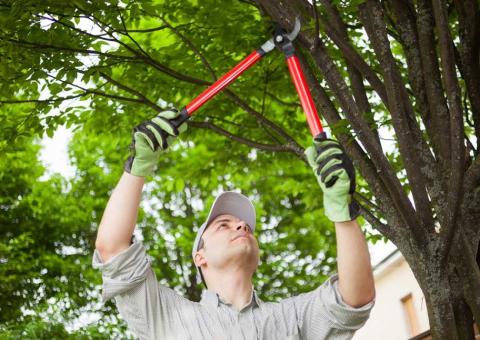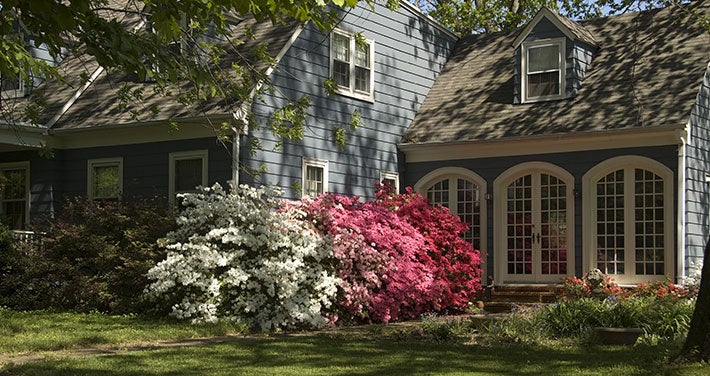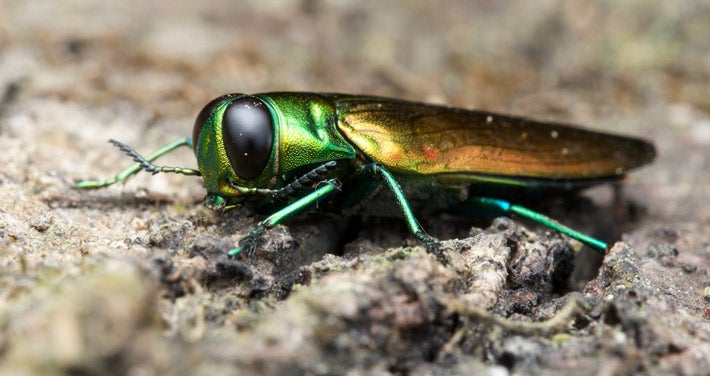Perhaps you’ve got your eye on that oak tree branch that’s been dangling over your porch, or you’d like to improve the air circulation between the maples at the edge of your property. Tree trimming may sound like something any seasoned homeowner can tackle, but it carries with it a high level of risk that can lead to serious injury.
Domestic tree trimming and removal is considered one of the most dangerous jobs in the United States, with an estimated 27,500 chainsaw–related emergency room visits each year. Here we’ll discuss the most common risks associated with DIY tree trimming, the importance of personal protective equipment, and when to enlist the services of a professional.
Risks Associated with Tree Trimming & Removal
The tools used for tree trimming are inherently dangerous. A split-second distraction when wielding a chainsaw or ax can result in a life-changing injury. Factor in the weight of such tools and a precarious perch on a limb or ladder and you’ve got a recipe for disaster.
Danger lurks in the trees themselves, too, in the form of a climbing poison ivy vine or wasps’ nests. A tree that’s diseased or in the process of dying is unstable and unpredictable, which is why professionals are trained to understand the physics principles that determine which way the tree will fall. Falling branches can injure people, damage homes, and take down power lines.
A tree’s proximity to overhear power lines is a major safety factor to consider. Contact with overhead power lines can lead to electrocution – the single most common injury (36%) among professional tree trimmers. Survey the area carefully and assume that all lines are energized at all times.
Recommended Safety Gear
Should you decide to tackle a DIY tree-trimming project, the proper protective equipment can make the difference between admiring your work from the comfort of a hammock and spending the afternoon at the local urgent care. Here are the basics that you shouldn’t go without.
A helmet and face shield will deflect any falling debris away from your eyes, while heavy-duty work gloves will protect you from cuts, scrapes, and contact with poisonous insects and plants. Chainsaw chaps are woven with layers of Kevlar thread designed to jam the chainsaw on contact, sparing its wearer serious injury. You’ll also want to protect your arms and legs from flying debris with a thick, long-sleeved shirt and long pants.
According to the National Safety Council, seven of the eight most common injuries to DIYers that result in a visit the emergency room can occur while trimming a tree.
If you’re not wearing a protective face shield, safety glasses or goggles are a must. It’s also important to protect your hearing with earmuffs or earplugs, as even the quietest chainsaws top out around 106 decibels (exposure to 85 decibels can lead to permanent hearing loss in less than four minutes). Finally, protect your feet from falling limbs with steel-toed boots or shoes.
When to Leave It to the Professionals
There are times when it just makes sense to enlist the service of a skilled professional. Here are some questions to ask yourself before you pick up the chainsaw.
- Does any part of the tree make contact with nearby power lines?
- Is there any visible decay?
- Is any part of the root structure exposed?
- Are there any branches resting or rubbing against your home?
- Has the tree already fallen?
- Are any of the branches cracked or split?
If you answered yes to any of these questions, it’s best to leave any trimming or tree removal to the experts.
Report an Emergency or Non-Emergency Tree Issue
If you see a fallen or potentially hazardous tree or branch call us right away at 1-888-301-7700 or fill out our Form to Report a Tree Issue. Please remember to leave a callback number in case we have questions.
Trees and Power Lines
Trees growing near power lines can be dangerous. Always stay at least 10 feet away from power lines and don't attempt to prune trees or branches around them on your own! Hire a qualified professional and always assume lines are energized.
Unitil schedules maintenance tree pruning in your area every five years, using the industry’s best practices and techniques to minimize disease and decay entry points. Our certified arborists can identify trees that pose a threat to the electric system before they fall and affect your service and safety. For more info on Unitil’s preventative tree maintenance program, click here.
Key Takeaways
- If you’re on a budget, schedule routine tree work for the fall and winter months, when professionals charge as much as 25% less than when demand is high during the warmer months.
- Most tree-related injuries are associated with males ages 30 to 59 during the months of September, October, and November.
- If you or your contractor are pruning or removing a tree near power lines, Unitil will disconnect the electric service and reconnect it when the tree work is completely free of charge. Call 1-888-301-7700 to schedule.




